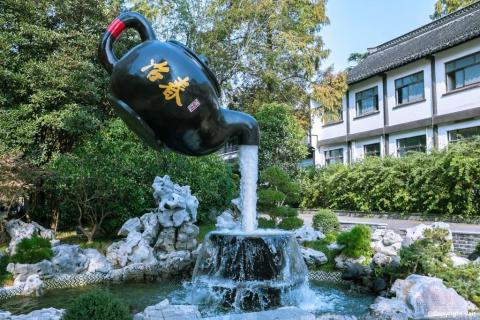
It's early the next morning, and today is the highlight of the plan, to visit the tomb of Liu Xu, King Guangling of the Han Dynasty. Get up close and personal with the "Huang Chang Ti Cou" and "Jade Clothes with Golden Threads", the highest burial features in the tombs of the Han Dynasty. Of course, morning tea is a must when you arrive in Yangzhou.
Picture and text start
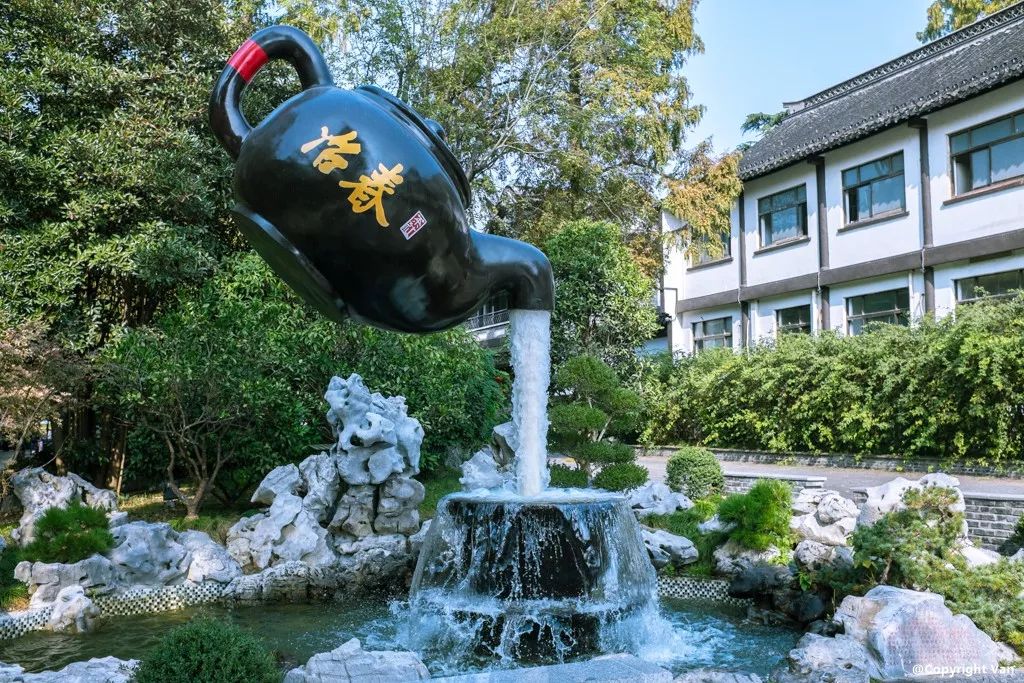
There is a saying in Yangzhou that "skin contains water during the day and water contains water at night", which means drinking tea during the day and taking a bath at night. Forget about taking a bath, you can get a "skin bag water". Walk 1000 meters to the famous Yechun Teahouse for morning tea.

On the way, I met an opera singer on the stage. The opera he sang in Yangzhou must be Yangzhou opera. I don’t understand. It is Monday morning, and the entertainment life of Yangzhou people is very active.
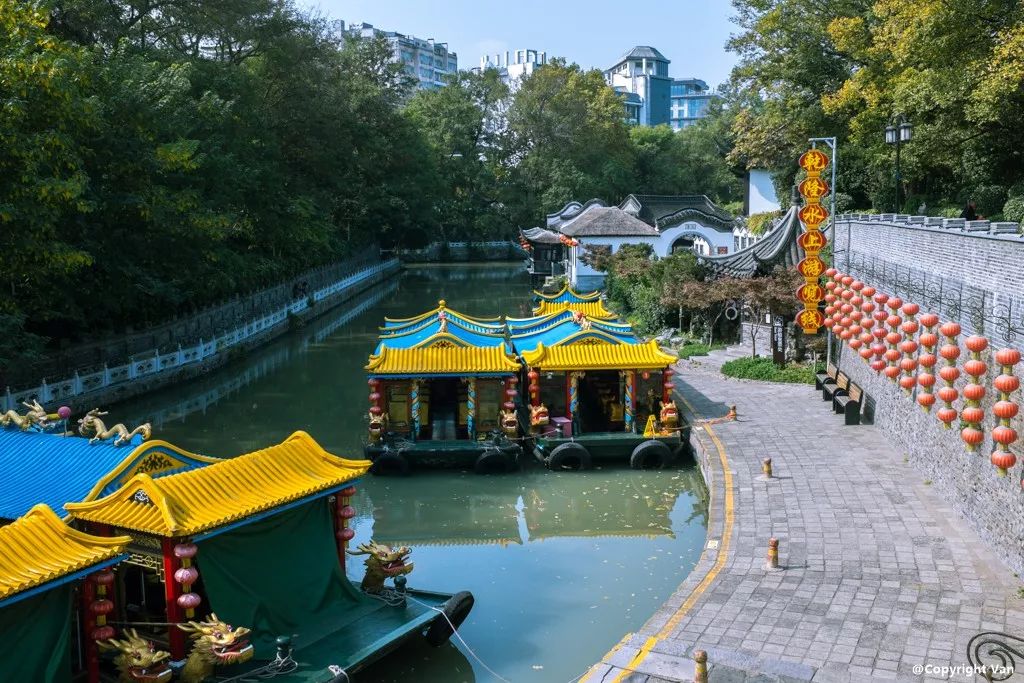
The entrance to Yechun Garden is the Qianlong Landing Pier. This is also called Royal Pier. Emperor Qianlong's seven voyages to the south of the Yangtze River basically followed the same route. He went all the way south along the Beijing-Hangzhou Grand Canal. This was the landing point in Yangzhou. He really knew where to choose. Lord Qianlong...he can be found everywhere...

Here we are, this is the building. The place with the big teapot just now is for set meals. I am alone and will not join in the fun of the set meals. This is an a la carte restaurant, so that’s where I’ll go. It's 10 o'clock in the morning on Monday, and there is a queue at Yechun Tea House...can't get in...

Fortunately, after waiting in line for 5 minutes, my number was called and I could go in. Well, as soon as I entered, judging from the information collected from my ears, at least half of them were Shanghainese. Sure enough, there were many people who had the same idea as me.

Green Yangchun, Yangzhou tea. Morning tea, morning tea must be drunk as tea to be the most authentic, but the plastic packaging is a bit too confusing, so at least brew it and serve it to me. As a result, not only do I not have a pot to make tea, I can only brew it in a cup, but I also have to make hot water myself... Well, I can have enough food and clothing by myself... Luyangchun ¥12

Yangzhou’s famous snack, crab roe soup dumplings. The thin crust is filled with soup. You need to drink the soup with a straw before eating the buns. The soup is absolutely delicious. It turns out that the straw is also a gimmick. Because of the meat filling inside and the soft bun skin outside, The mouth will be blocked after taking a small sip through the straw. The best solution is to pick up a small bowl and bite a small hole in the skin to drink it directly. That full sip of soup... is satisfying. It is indeed a snack at a state banquet! Crab soup dumplings¥28

Afterwards, all the other things I ordered were put in a basket and served. On the left is pine nut shaomai for ¥5.5, in the middle is Wudingbao for ¥15, on the right is shrimp steamed dumpling for ¥15, and the one below is Yechun steamed dumpling for ¥6. Everything is delicious. Although the breakfast cost 81.5, I feel it is worthy of the price. It is really delicious. I have already experienced the skinny water. I took a taxi to dig a tomb, oh no, visit the tomb...

From the Royal Pier to the Tomb of King Guangling, it’s a little over 3 kilometers and costs 7.8 yuan by taxi. Taking a taxi in Yangzhou is really cheap. In ancient my country, the highest-level tombs enjoyed by the emperor were called mausoleums, those of vassal kings and princes were called tombs, and those of us with fifty cents could only be called graves. The main entrance of the tomb of King Guangling is modeled after the double towers of the Han Dynasty. The most beautiful tower is the Sanchong Tower in Chang'an City of the Tang Dynasty. (I also wanted to wait until there were no more people before shooting, but they were at work, so I guess it won’t be finished for a while...)

The Tomb of King Guangling of the Han Dynasty is located in Tianshan Area (formerly Tianshan Town), Shuangqiao Town, Gaoyou Huxi New District, Gaoyou City. Tomb No. 1 of the Western Han Dynasty was excavated in Shenju Mountain in 1979. Its wooden casing area is 18 times larger than that of the Mawangdui Han Tomb in Hunan Province. It represents the highest ritual funeral in ancient times, "Huang Chang Ti Cou", and fragments of gold-lined jade clothing were unearthed. Preliminary research shows that the owner of the tomb is Liu Xu, King of Guangling in the Western Han Dynasty, and his wife. They were buried together in different caves. A large number of cultural relics have been unearthed from Han tombs, including jade, bronze, lacquerware, pottery, wooden figurines, vehicles and other utensils. The lacquerware and wood carvings among the unearthed funerary objects are very exquisite, especially the lacquerware, wooden shoes and complete sets of bathing utensils, which are rare in Han Dynasty archeology. (Baidu Encyclopedia) It is here now and was moved from Gaoyou as a whole. Directly opposite the gate is the main exhibition hall, and inside is the tomb's coffin room.
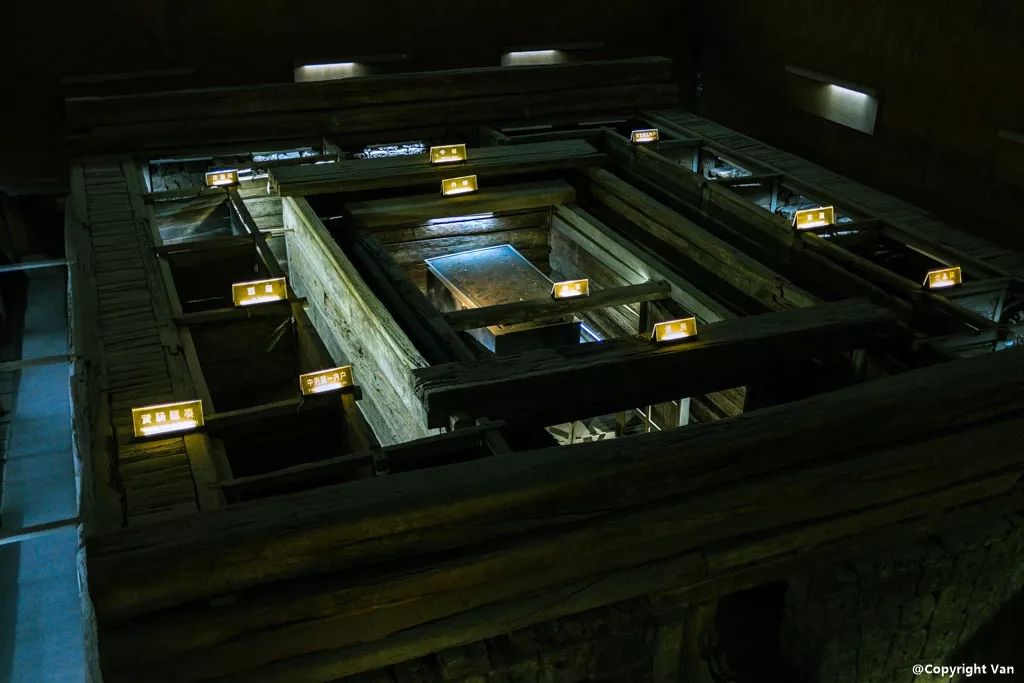
This is the whole tomb. The big one in the middle is the coffin of King Guangling, and the coffin is stored in the coffin. This is how the so-called coffins come from, and the room where the coffins are stored is called the coffin room. This kind of wooden coffin chamber made entirely of wood is the famous "Huang Chang Ti Cou", the highest level funeral.

The so-called "yellow intestine" refers to the yellow inner part of the wood, which is actually the wood with the skin removed. "TiCao" is something I have never understood until I saw it this time. The title refers to the placement method of wood. To put it bluntly, it means putting together small pieces. Generally when building the walls of a house, long wooden boards should be placed horizontally and then built up one by one, but the problem is that all the wood is cut into sections and placed vertically. Everything you see inside and outside is made of wood. Cross section (it’s not clear, see the outer wall of the coffin room and the walls of the surrounding buildings in the picture above)

The ancients had the custom of living like life, that is, how they lived when they were alive, and everything was buried with them after death. Liu Xu was the first generation of King Guangling, and was buried in the early Western Han Dynasty. The Han Dynasty implemented a rich burial system, and the Western Han Dynasty was rich at that time, so the tomb was extremely luxurious, with everything from wing rooms to kitchens and bathrooms.

The huangchangtikuo in the tomb of King Guangling are all made of nanmu. It seems that more than 50 cubic meters of nanmu were consumed in total. What is nanmu? It is the best wood. Have you ever heard of golden nanmu? The pillars of the Hall of Supreme Harmony in the Forbidden City were originally made of nanmu. Later, it was destroyed by fire during the Kangxi period. Emperor Kangxi wanted to use nanmu again, but he could no longer find it, so he could only use nanmu. Pine wood instead. More than 50 cubic meters of nanmu...the world of rich people is unimaginable...

Directly behind the tomb, you can see the two stairs in front, yes, you can go down! Let's have a close encounter, of course, without "contact"...

I'm down! You can see the entire tomb chamber by opening half of the tomb door. The parallel perspective is even more shocking.

The distance is close enough, and the two sides of the fence are separated by more than two thousand years. It is very shocking. It is definitely worth seeing this this time, and the others are all worth it. I stood here in silence for a long time, and there was no one there anyway. It was just a good time to travel.
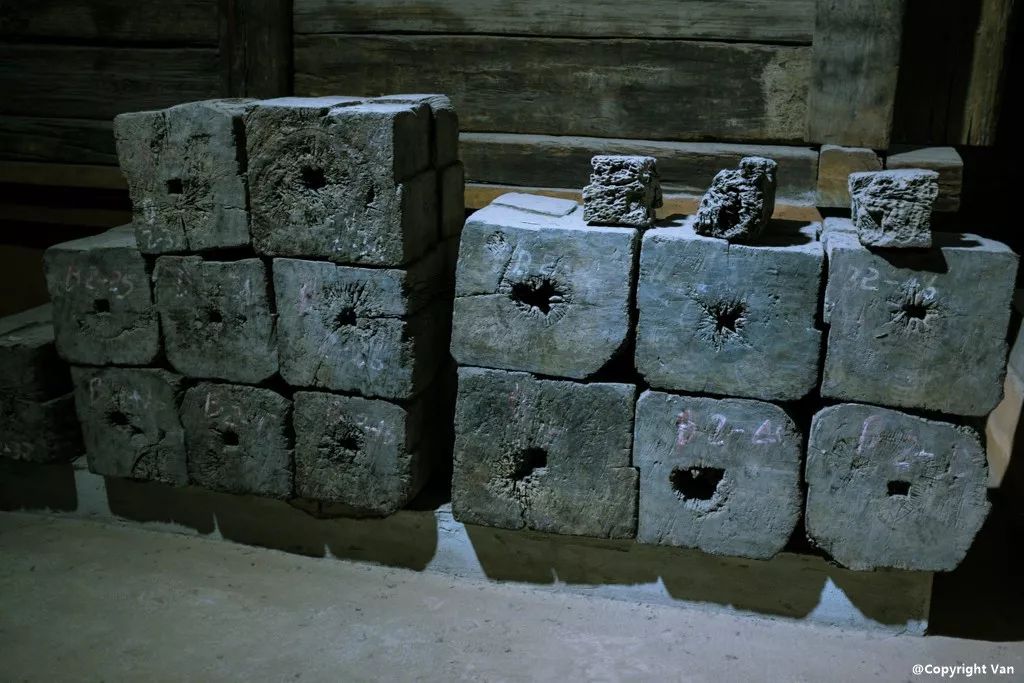
This is the rule of "Tizuo". Each piece has a number. Even if you get one piece wrong, you can't completely put it together. It is said that you can't even insert the blade after it is put together. It seems a bit exaggerated... let alone the blade, in some places it seems like A hammer can fit inside...

Take a look at the burial objects, a complete set of kitchenware and tableware, including pottery, lacquerware, and bronzeware. The lacquerware looks good, I like it.

This seems to be talking about the production process of the title. Indeed, every piece has this kind of buckle.

This is a small piece of mortise and tenon structure. The ancient mortise and tenon structure is one of the most awesome things of our ancestors. There is no need for nails or glue to build a house. With only mortise and tenon structural components, a solid building can be built. The bridge in the Qingming River Scene is a wooden bridge with a pure mortise and tenon structure. It is a pity that this craft has been lost.

unearthed living utensils

Unearthed carpentry tools

Jade clothes with golden threads. The ancients believed that jade can prevent the leakage of human essence. Using jade to make clothing and stuffing jade plugs into all the holes in the human body can protect the body from decay. Jade clothes are also called jade boxes. Those made of gold threads are gold-lined jade clothes, which are the highest grade, and then there are also silver-lined ones and copper-lined ones. This piece should be an imitation. When the tomb of Liu Xu was unearthed, it was visited by tomb robbers, and there are only some fragments of the jade garment.

Then we came to another building behind the main hall, which is the queen's tomb. At the door is a restored wax figure of harem life in the Han Dynasty. It's a bit close to the uncanny valley effect, but not there yet, so it's a bit scary but not scary (it still doesn't look like it...)

The tomb of King Guangling is the tomb of King Guangling Liu Xu and his wife buried together in different caves . The Queen's Tomb also has the Huang Chang Ti Coupling Regulations, and there is a team of carriages and horses buried in front of it. I don't know why Liu Xu didn't have this configuration.

The etiquette system of the Han Dynasty: the emperor drove six horses, the princes drove four, the officials three, the scholars two, and the common people one. This is a driving four, which is in line with the etiquette of the time. It’s really interesting to be able to connect physical objects with book records, so I like cultural landscapes much more than natural landscapes.

Running to the second floor, the entire chariot and horse team formed a formation. The one in the middle should be the car of Liu Xu and his wife, and the one next to it should be the accompanying officials and their accompanying luggage according to the etiquette mentioned above. Still the same problem, I don’t know why it’s in the Queen’s Tomb. Does Liu Xu have strict control over his wife? Is your wife in charge of everything?

Now that everyone is here, let’s take a look at the entire tomb. It seems that it is necessary to change to a portable phone. The equivalent 35MM is really difficult to use indoors sometimes.
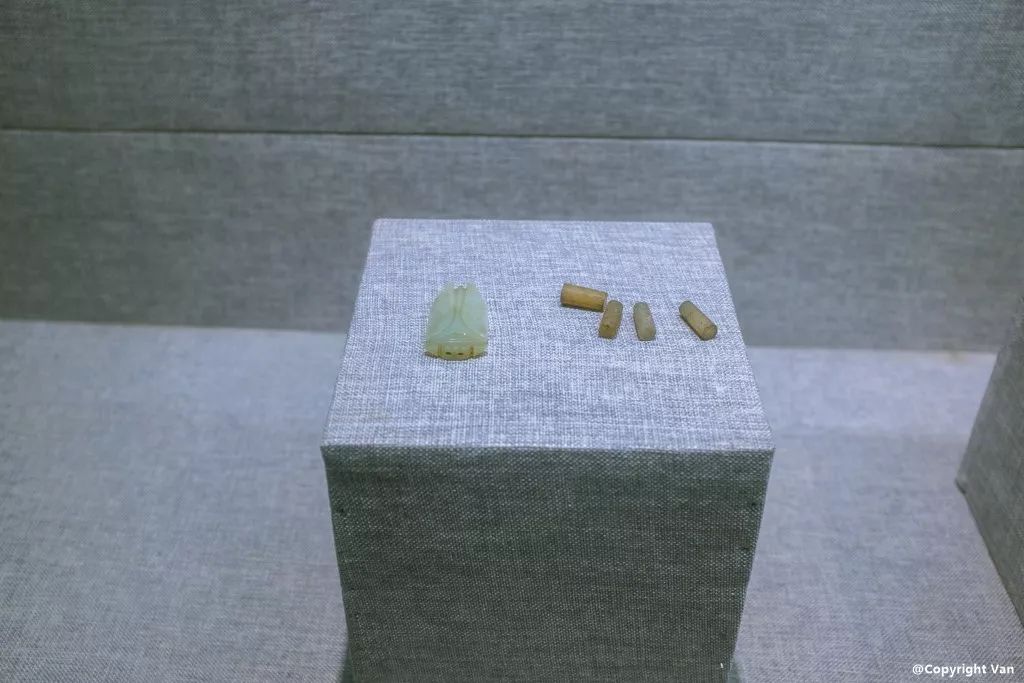
Jade plug. There are 5 here, guess where they are stuffed? hey-hey……

This is interesting. Touhu is an ancient game. Throwing arrows into a small-mouthed pot is a hobby of the ancients (not just the Han Dynasty). It has been passed down for a long time. As expected, the ancients had nothing to play with. This throwing pot is only a few centimeters high, and it also has arrows made of it. It is a special burial tool.

An inscription marked "South Gate". This is the most awesome thing about us Chinese. We can understand our writing from two thousand years ago or even earlier. This is unique in the world. Only we Chinese can understand Chinese characters, awesome!
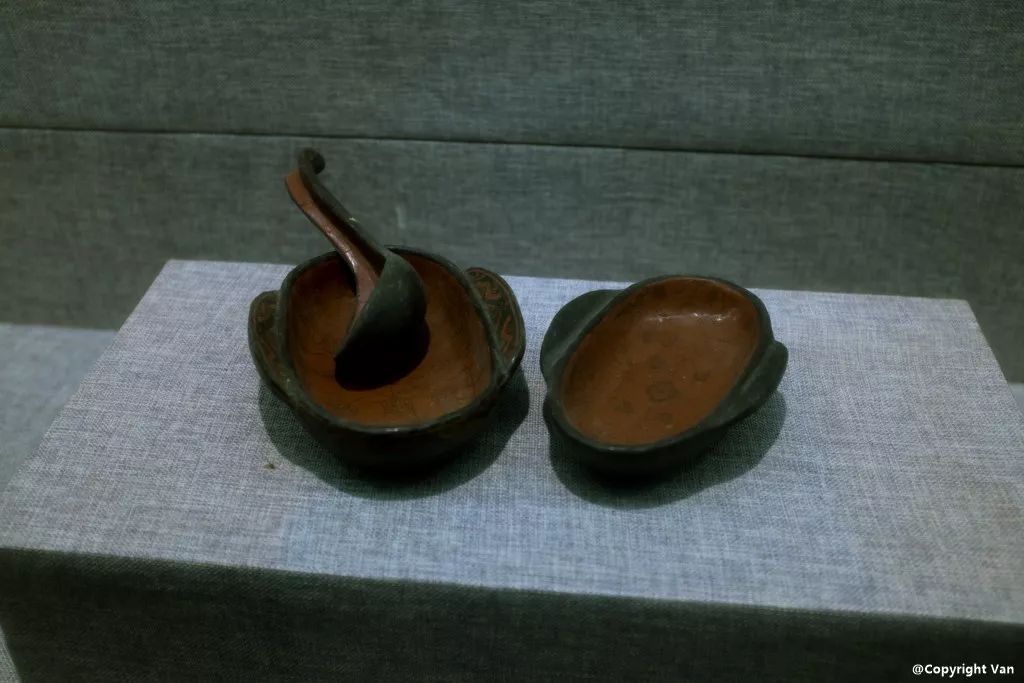
A pair of lacquerware, what are they called? They are bowls. Beautiful lacquerware

This is a good thing. There are very few unearthed clogs from the Han Dynasty. They look almost exactly the same as Japanese clogs. Little Japan is trying to imitate us.
When I was leaving, a tour group came in at the door... Fortunately, I have reserved the venue to watch it, so you can take your time and wander around, haha

After that, I was going to go to the Sui and Tang Dynasty Cultural Scenic Area next door and passed by a city gate building. After looking at the map, I realized that it should be the Songjia City ruins. During the Song Dynasty, especially the Southern Song Dynasty, Yangzhou became the front line against the Jin Dynasty. The Song army built another military castle next to Yangzhou City, and built a small city between the two cities. This small city is the Songjia City in front. I didn't go there, I don't know how to get there...

Sui and Tang cultural scenic spots. I didn’t know what it was before I went in. It’s just a scenic spot on the edge of Slender West Lake. It’s a must-see spot from the Tomb of Prince Guangling to Slender West Lake. Go in and see what it is.

There are hundreds of people and thousands of people. Cui Zhiyuan’s learning spirit of “I can learn from a hundred people”.
Cui Zhiyuan, courtesy name Guyun, nickname Haiyun, posthumous name Wenchang. A native of Wangjing, Silla on the Korean Peninsula. When he was twelve years old, in the ninth year of Xiantong (868 AD) of Emperor Yizong of the Tang Dynasty, he took a boat to the west and entered the Tang Dynasty. He first studied in the capital Chang'an and traveled to Luoyang. In the first year of Emperor Qianfu of Emperor Xizong of the Tang Dynasty (AD 874), he passed the imperial examination and was appointed as the captain of Lishui County. When his term of office expired, he was hired as the shogunate by Gao Pian, the governor of Huainan, and was later appointed as the governor of the shogunate. When he was twenty-eight years old, that is, the fourth year of Zhonghe reign of Emperor Xizong of the Tang Dynasty (AD 884), he returned to Silla as a "national messenger". During his sixteen years in the Tang Dynasty, he was modest and respectful, and he had extensive friendships with literati, poets, and shogunate officials in the late Tang Dynasty. (Baidu Encyclopedia)

Then I saw a replica of the Tang Dynasty, which was not interesting. The text said it was the palace of Emperor Yang of the Sui Dynasty, but I didn’t see any ruins or buildings at all...

Yanhe Pavilion. The Mingyue Yangzhou theme exhibition hall talks about the history of Yangzhou and has some corresponding cultural relics. It is quite interesting to take a closer look.

Cui Zhiyuan Monument.

Cui Zhiyuan Memorial Hall. I don't have much interest in Koreans, but this imitation Tang Dynasty building is quite interesting. The Tang Dynasty architecture is beautiful.

Three unique monuments.
The monument is engraved with a portrait of the eminent monk Bao Zhi of the Southern Dynasties painted by Wu Daozi of the Tang Dynasty and a poem by Li Bai written by Yan Zhenqing. The poems, calligraphy and paintings of the three famous masters are integrated into one, so it is called the "Three Wonders". The original stele no longer exists. This stele was re-engraved by a monk in the early Ming Dynasty based on rubbings. It was originally embedded in the corridor wall of Chanzhi Temple above. It was one of the "Eight Scenic Spots in the West of Bamboo" in Yangzhou in the Qing Dynasty. It is now collected by the Tangcheng Ruins Museum in Yangzhou. . (Text introduction of attractions)
So far, I found that the content of the second day was not finished yet. In order to avoid that the second part was too long and the third part was too short, I decided to put the content of the Daming Temple in the second part together with the Slender West Lake on the third day.
Let’s talk about what happened next. After seeing Daming Temple, I took a taxi back to the hotel, planning to take a rest and then fight on Dongguan Street again in the evening. When I returned to the room, I didn't pay attention. I picked up the Weiquan I bought the night before and drank it in one gulp. As you might have guessed... the Weiquan was ruined! ! ! I was in the room from 4 pm to 8 pm: lying, spitting and pulling in an endless cycle. At 8 o'clock, I thought about it. If I don't go shopping today, I won't have time to go. Yesterday I thought about going today, but I didn't buy anything... I hurriedly walked around Dongguan Street and finally finished shopping. In the future, be sure to book a hotel with a refrigerator! refrigerator! refrigerator! of!
